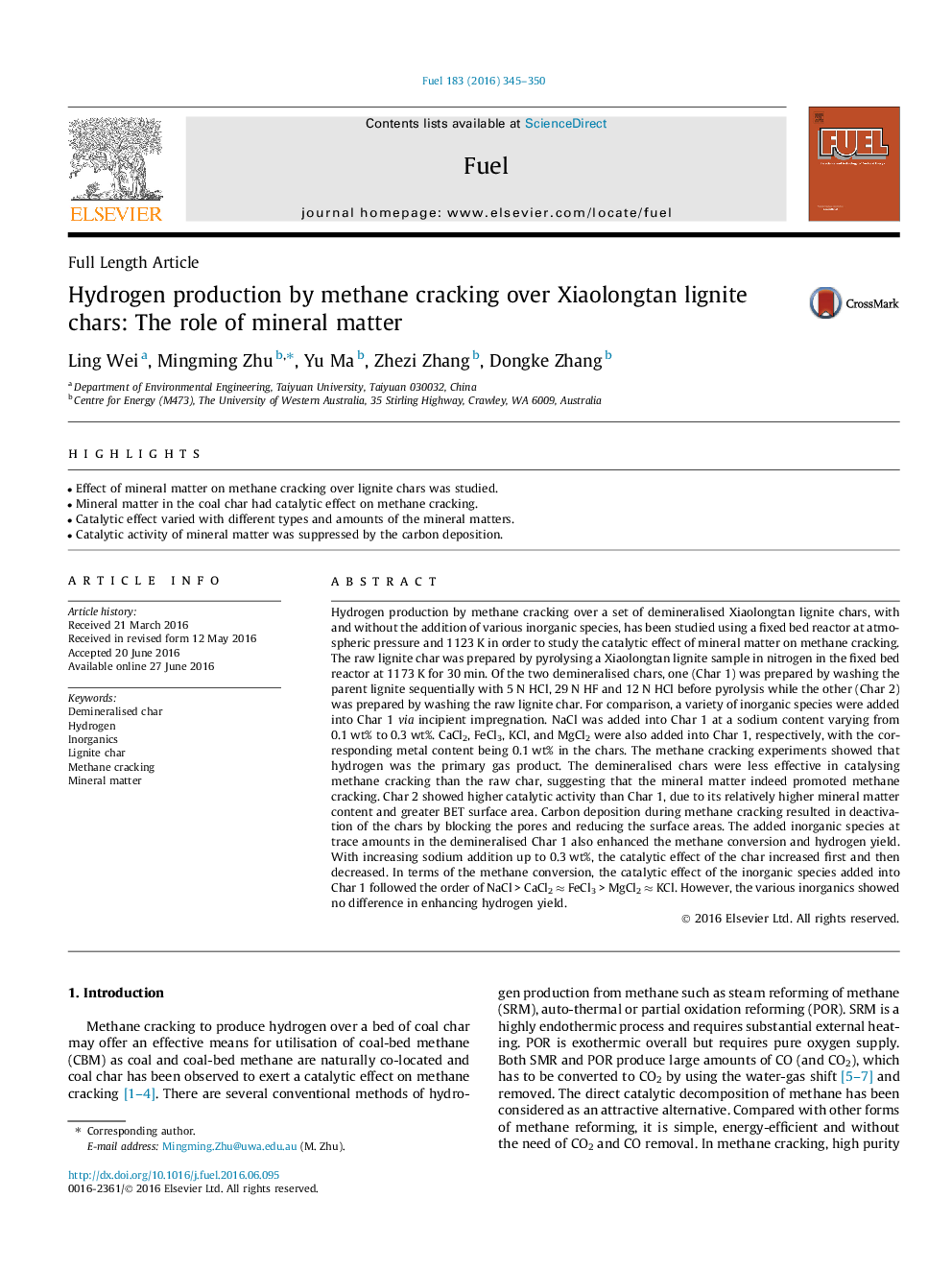| Article ID | Journal | Published Year | Pages | File Type |
|---|---|---|---|---|
| 6633288 | Fuel | 2016 | 6 Pages |
Abstract
Hydrogen production by methane cracking over a set of demineralised Xiaolongtan lignite chars, with and without the addition of various inorganic species, has been studied using a fixed bed reactor at atmospheric pressure and 1123 K in order to study the catalytic effect of mineral matter on methane cracking. The raw lignite char was prepared by pyrolysing a Xiaolongtan lignite sample in nitrogen in the fixed bed reactor at 1173 K for 30 min. Of the two demineralised chars, one (Char 1) was prepared by washing the parent lignite sequentially with 5 N HCl, 29 N HF and 12 N HCl before pyrolysis while the other (Char 2) was prepared by washing the raw lignite char. For comparison, a variety of inorganic species were added into Char 1 via incipient impregnation. NaCl was added into Char 1 at a sodium content varying from 0.1 wt% to 0.3 wt%. CaCl2, FeCl3, KCl, and MgCl2 were also added into Char 1, respectively, with the corresponding metal content being 0.1 wt% in the chars. The methane cracking experiments showed that hydrogen was the primary gas product. The demineralised chars were less effective in catalysing methane cracking than the raw char, suggesting that the mineral matter indeed promoted methane cracking. Char 2 showed higher catalytic activity than Char 1, due to its relatively higher mineral matter content and greater BET surface area. Carbon deposition during methane cracking resulted in deactivation of the chars by blocking the pores and reducing the surface areas. The added inorganic species at trace amounts in the demineralised Char 1 also enhanced the methane conversion and hydrogen yield. With increasing sodium addition up to 0.3 wt%, the catalytic effect of the char increased first and then decreased. In terms of the methane conversion, the catalytic effect of the inorganic species added into Char 1 followed the order of NaCl > CaCl2 â FeCl3 > MgCl2 â KCl. However, the various inorganics showed no difference in enhancing hydrogen yield.
Related Topics
Physical Sciences and Engineering
Chemical Engineering
Chemical Engineering (General)
Authors
Ling Wei, Mingming Zhu, Yu Ma, Zhezi Zhang, Dongke Zhang,
